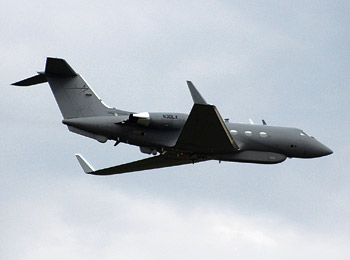INDIAN ARMED FORCES CHIEFS ON
OUR RELENTLESS AND FOCUSED PUBLISHING EFFORTS

SP Guide Publications puts forth a well compiled articulation of issues, pursuits and accomplishments of the Indian Army, over the years

I am confident that SP Guide Publications would continue to inform, inspire and influence.

My compliments to SP Guide Publications for informative and credible reportage on contemporary aerospace issues over the past six decades.
- Prime Minister witnesses 'Bharat Shakti' – a Tri-Services Firing and Manoeuvre Exercise in Pokhran, Rajasthan
- Interim Defence Budget 2024-25 — An Analysis
- Union Defence budget 2024
- Prime Minister Modi Commemorates Indian Navy Day in a Grand Ceremony
- Prime Minister Modi Flies in the LCA Tejas
- New Chapter in India-Italy Defence Ties
- Airpower beyond Boundaries
Lockheed Martin upgrades flying intelligence test bed

Lockheed Martin’s manned airborne test bed, the Airborne Multi-INT Lab (AML), has been enhanced to expedite its ability to deliver decision-quality intelligence. The AML is utilised to experiment with combinations of sensors, systems and technologies to help customers develop ways to support a diverse range of contingency operations.
To accelerate its ability to transform ‘data’ into ‘intelligence,’ updates were recently made to the AML’s onboard processing capability, which collects and correlates disparate types of sensor data. The AML now has an autonomous sensor control mode that can coordinate operations between the test bed’s various onboard sensors. This mode allows operators to focus on mission planning and operational issues while detailed execution is handled autonomously.
Also integrated into the test bed’s mission system was a cognitive processing capability that enables rapid adaptation to a changing target environment. In addition, the AML’s open, ‘plug-and-play’ architecture was upgraded to extend the system’s ability to integrate with existing ground architectures. This open architecture allows additional new software and hardware to be integrated in a matter of hours.
“Getting the right intelligence to those who need it is critical for any mission to succeed,” said Dr Rob Smith, Vice President of C4ISR for Lockheed Martin. “The AML has furthered our ability to expedite solution delivery, reduce the risk of those solutions, and help us deliver differentiated capabilities affordably to our customers.”
The AML, a modified Gulfstream III business jet, provides a readily reconfigurable platform to rapidly explore how multiple sensors and onboard systems interact, and how to best apply them for use in military and non-military markets. A variety of features onboard the aircraft enable this experimentation. Equipped with a multitude of sensors (electro-optical/infrared systems, synthetic aperture radar, electronic intelligence and communications intelligence) and various communications apertures, the AML also has an open architecture that eases sensor interchangeability, a radome on the belly of the aircraft with ample volume for a mix of sensors, four onboard workstations and a computing capability that supports most commercial operating systems.
Beyond traditional uses such as development and evaluation support, this robust intelligence, surveillance and reconnaissance (ISR) lab can be deployed anywhere in the world with a minimal support footprint. Since its introduction in 2009, the AML has more than 4,000 mission hours providing ‘ISR as a Service’ supporting realworld customer missions.





